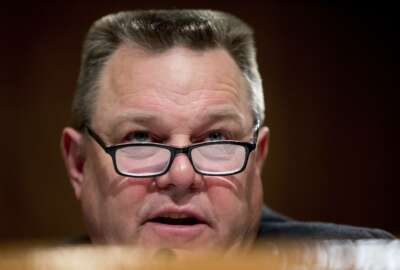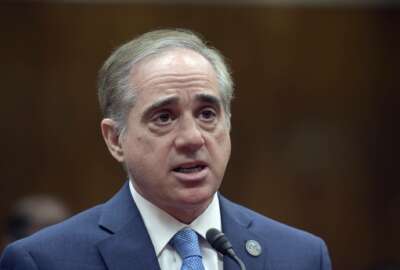
Funding for a new veterans choice program remains the big, unresolved question for VA
Details on funding for the new program are still largely unclear. VA, however, believes administrative changes to the current Veterans Choice Program will save ...
Debate over the future of the Veterans Choice Program began in earnest Tuesday, as the Veterans Affairs Secretary David Shulkin and House VA Committee Chairman Phil Roe (R-Tenn.) presented their respective proposals to make community care programs permanent.
Shulkin’s proposal, called the Veterans Coordinated Access and Rewarding Experiences (CARE) Act, would streamline VA’s seven disparate community care programs into one. It would eliminate the 40-mile/30-day requirement that veterans must currently meet to be eligible to receive care from a private sector provider.
“[It] leaves behind the old days where administrative needs, not the veterans’ needs, govern decisions,” Shulkin said. “It’s about individualized care, community care, well-coordinated health care designed for a positive experience. The VA will take back customer service and treat veterans as valuable customers. Veterans CARE ensures veterans get the right care, at the right time with the right provider.”
The conversations that the department and House lawmakers held in public Tuesday have, in the past, been controversial ones. Some organizations, including the American Federation of Government Employees, see the elimination of VA’s current eligibility requirements for private sector care as a gateway to privatize core functions of the department.
AFGE has strongly argued in recent weeks that the Veterans CARE Act and similar proposals would “voucherize” VA in favor of private care.
But Shulkin and lawmakers again made the case that their proposals do nothing of the sort.
“I believe it is important to state yet again that this effort is in no way, shape or form intended to create a pipeline to privatize the VA health care system,” Roe said. “I want to be completely clear about that.”
In fact, few lawmakers Tuesday seemed fearful that the department’s plan and the House VA proposal too strongly favored private sector care, and they seemed satisfied that VA’s recommendation in particular included enough provisions that would enhance the department’s current capacity.
“This is about building a VA that veterans choose for their care,” Shulkin said. “We want veterans to choose VA.”
If anything, members had more unresolved questions about how much the new Choice program will cost and how the administration will pay for it.
Both Roe and committee Ranking Member Tim Walz (D-Minn.) said they were concerned with funding for the program, and few proposals offered substantial funding streams to pay for the program.
Shulkin said he’s still discussing the budgetary details of his proposal with the Office of Management and Budget. But the VA proposal would cost “billions of dollars less” over 10 years than continuing the current Choice program, Shulkin said.
“Mostly, it’s going to be the decreased administrative costs,” he said. “The administrative costs associated with the Choice program and its complexity have been extremely high; 13 percent of all money goes toward administrative costs. That’s not consistent with what the private sector would do. We want to save on administrative costs and invest that into both the VA system and more care that veterans can receive in the community.”
Congress is under a tight timeline to make a decision about the Choice program’s future. VA said it has $1.4 billion left in the existing Choice fund and expects it will run out by the end of the calendar year.
Transferring the Choice program from mandatory funding to discretionary funding is one option that some veterans service organizations said might resolve the perpetual need to find emergency resources for Choice.
“We don’t want to continuously have the crises that we keep having with having to find money to fund them again,” said Kayda Keleher, associate director of the national legislative service for the Veterans of Foreign Wars. “It’s rather exhausting. Also, we’re concerned that over time, there would be a gradual erosion of VA health care systems if we’re continuously having to find money to put into mandatory spending for VA and community care providers.”
But beyond funding concerns, committee members seemed relatively receptive to other provisions in the VA plan, which are designed to help the department better recruit and retain top health professionals.
For example, VA’s proposal suggests eliminating existing caps on employee bonuses and performance awards. The Veterans Access, Choice and Accountability Act of 2014, which hastily stood up the Choice program and introduced new “accountability” measures for VA employees and senior executives, put limits on bonuses and awards three years ago.
VA also wants to add about 1,500 new slots for medical residencies, which Shulkin strongly advocated for and believes the department could competitively fill with young talent. Residents would be required to work for a period of time at the department after completing a VA residency.
The department is also interested in resuming responsibility of some of the administrative functions it had previously outsourced to third-party contractors under the 2014 Choice Act.
“VA needs to take back customer service,” Shulkin said. “No successful company does that and survives. We learned that the relationships developed with our veterans over the years [are] very important to maintain.”
To maintain relationships with its veterans, VA said it wants to schedule both in-house and private sector appointments and communicate and coordinate care for veterans. It’ll also take back the responsibility of paying most bills, which VA believes will get easier under one, unified stream of funding for veterans healthcare.
In addition, the department wants the authority to share medical facilities with other federal agencies, including the Defense Department.
“We now have discussions going on all over the country about where the Department of Defense has excess capacity and where we have veterans that need care and services, and vice versa,” Shulkin said. “We are working to figure out what makes sense for veterans, active service members and the taxpayers in coming up with a number of different plans and facilities. We’re asking for some mobility even in this legislation to avoid having to exchange bills. We’re probably spending more on administrative costs than we are on taking care of veterans in this case. We want to try to decrease some of the barriers and regulations to doing more of this work together.”
Copyright © 2024 Federal News Network. All rights reserved. This website is not intended for users located within the European Economic Area.
Nicole Ogrysko is a reporter for Federal News Network focusing on the federal workforce and federal pay and benefits.
Follow @nogryskoWFED
Related Stories





